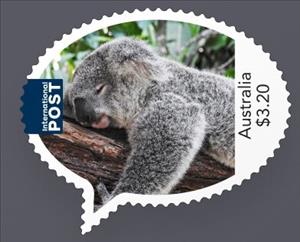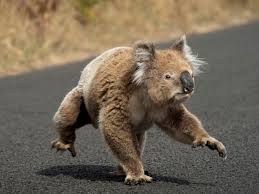Stamp: MyStamps Personalizable Stamp Frames (Australia 2019)
MyStamps Personalizable Stamp Frames (Australia 2019)
16 December (Australia ) within release MyStamps (2019) goes into circulation Stamp MyStamps Personalizable Stamp Frames face value Various Australian dollar
| Stamp MyStamps Personalizable Stamp Frames in catalogues | |
|---|---|
| Colnect codes: | Col: AU 2019-29A |
Stamp is square format.
Image above is a stock image from Australia Post. Printed in panes of 20 on demand via customer order through Australia Post Webiste. Customer submits image and chooses face value to be printed : Domestic Rates : 65c, $1.10, $2.20, $3.30 or $5.50 International Rates : $2.20, $2.30, $2.50 or $3.20 International Rates will have the Blue International Post emblem printed on the stamp, Domestic rates will lack this. Sold by Australia Post for face value of sheet of 20 plus $13.00 processing fee.Also in the issue MyStamps (2019):
- Stamp - MyStamps Personalizable Stamp Frames face value Various;
- Stamp - MyStamps Personalizable Stamp Frames face value Various;
- Stamp - MyStamps Personalizable Stamp Frames face value Various;
- Stamp - MyStamps Personalizable Stamp Frames face value Various;
- Stamp - MyStamps Personalizable Stamp Frames face value Various;
- Stamp - MyStamps Personalizable Stamp Frames face value Various;
- Stamp - MyStamps Personalizable Stamp Frames face value Various;
- Stamp - MyStamps Personalizable Stamp Frames face value Various;
- Stamp - MyStamps Personalizable Stamp Frames face value Various;
Stamp MyStamps Personalizable Stamp Frames it reflects the thematic directions:
Animals are multicellular, eukaryotic organisms of the kingdom Animalia (also called Metazoa). All animals are motile, meaning they can move spontaneously and independently, at some point in their lives. Their body plan eventually becomes fixed as they develop, although some undergo a process of metamorphosis later on in their lives. All animals are heterotrophs: they must ingest other organisms or their products for sustenance.
The koala (Phascolarctos cinereus), sometimes called the koala bear, is an arboreal herbivorous marsupial native to Australia. It is the only extant representative of the family Phascolarctidae and its closest living relatives are the wombats. The koala is found in coastal areas of the mainland's eastern and southern regions, inhabiting Queensland, New South Wales, Victoria, and South Australia. It is easily recognisable by its stout, tailless body and large head with round, fluffy ears and large, dark nose. The koala has a body length of 60–85 cm (24–33 in) and weighs 4–15 kg (9–33 lb). Fur colour ranges from silver grey to chocolate brown. Koalas from the northern populations are typically smaller and lighter in colour than their counterparts further south. These populations possibly are separate subspecies, but this is disputed.
Mammals are any vertebrates within the class Mammalia (/məˈmeɪli.ə/ from Latin mamma "breast"), a clade of endothermic amniotes distinguished from reptiles (including birds) by the possession of a neocortex (a region of the brain), hair, three middle ear bones and mammary glands. All female mammals nurse their young with milk, secreted from the mammary glands. Mammals include the largest animals on the planet, the great whales. The basic body type is a terrestrial quadruped, but some mammals are adapted for life at sea, in the air, in trees, underground or on two legs. The largest group of mammals, the placentals, have a placenta, which enables the feeding of the fetus during gestation. Mammals range in size from the 30–40 mm (1.2–1.6 in) bumblebee bat to the 30-meter (98 ft) blue whale. With the exception of the five species of monotreme (egg-laying mammals), all modern mammals give birth to live young. Most mammals, including the six most species-rich orders, belong to the placental group. The largest orders are the rodents, bats and Soricomorpha (shrews and allies). The next three biggest orders, depending on the biological classification scheme used, are the Primates (apes and monkeys), the Cetartiodactyla (whales and even-toed ungulates), and the Carnivora (cats, dogs, seals, and allies).



